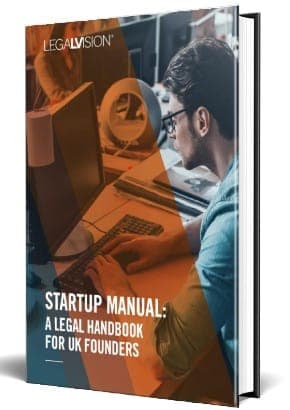Table of Contents
If you have ever had to pay capital gains tax yourself, you might wonder how HMRC assesses it for a business, particularly a company. You may be surprised that companies do not pay capital gains tax, though certain other businesses do. That said, companies still have to pay taxes on certain transactions involving capital assets. This article will explain the mechanics behind how HMRC assesses a company’s tax liability for capital gains.
Capital Gains Tax vs Chargeable Gains
Capital gains tax (CGT) is a kind of chargeable gains. That is, CGT is a set of tax rules that determines how individuals and unincorporated business entities pay tax on any profit arising from the sale of capital assets. In addition to CGT, HMRC has a separate system for calculating how much money a company has to pay when they make a gain on the sale of a capital asset.
Put another way, there are two separate tax systems to assess a taxpayer’s liability for any surplus gains they make when they dispose of a capital asset. For individuals, HMRC uses the CGT system. For companies, any chargeable gain is factored into the company’s total taxable profits (TTP), which is then taxed at the corporate tax rate.
Total Taxable Profits
Companies make money in one of two ways:
- from trading income, which is formed of the proceeds of all routine sales a business makes in the tax year; and
- from capital proceeds, which is all the disposal money that comes from selling all the capital assets in a tax year.
The combination of these two determines a company’s total taxable income. HMRC first looks at a company’s total trading income, less any deductible expenses and allowances, to arrive at the total income profit.
Then, HMRC looks at all the money that comes from the sale of capital assets and subtracts any allowable expenses and applies any available tax relief to arrive at the total chargeable gains.
The total income profit added with the total chargeable gains forms a company’s total taxable profits. HMRC then applies the corporate tax rate to the TTP, which is currently 19%, to determine the company’s tax liability for the tax year.
Therefore, the money a company makes selling capital assets — its chargeable gains — is one of two key figures used to determine its tax liability. But the chargeable gains do not tell the whole experience.
The rest of the section examines the rules for calculating a company’s total chargeable gains.

LegalVision’s Startup Manual is essential reading material for any startup founder looking to launch and grow a successful startup.
Calculating Total Chargeable Gains
The basic formula for calculating the total chargeable gains is as follows:
|
£ |
£ | |
|
Total Sale Proceeds |
X | |
|
Net Sale proceeds |
X |
|
|
Less: allowable expenditure and indexation allowance |
(X) |
|
|
Chargeable gain before rollover relief |
X | |
|
Less: rollover relief (if available) |
(x) | |
|
= Total Chargeable gains |
X | |
|
TTP (= Total Chargeable Gains + Total Income Profit) |
|
X |
Each of these is explained below.
Total Sale Proceeds
Imagine that in a single tax year, your company sells three capital assets:
- a piece of machinery;
- its business premises which it owned; and
- a company van.
Below is a table demonstrating the price you paid for the capital assets and the price you sold them for.
|
Price Paid (£) |
Price Sold (£) | |
|
Machine |
10,000 |
20,000 |
|
Business Premises |
50,000 |
100,000 |
|
Company Van |
10,000 |
5,000 |
|
Total |
£70,000 |
125,000 |
You can then subtract the total price paid from the price sold. This is £50,000.
Allowable Expenditures and Indexation Allowances
A full account of these deductions is beyond the scope of this article. Put briefly:
- Allowable expenditures are certain qualifying expenses you incurred purchasing or selling the capital asset. They also include any sums spent enhancing its value.
- Indexation allowance is a relief tool that allows a company to offset the price of inflation from the purchase price of the capital asset. HMRC takes its calculation from the retail price index (RPI). Since 2017, this amount has been frozen. In other words, the allowance is restricted to 2017 inflation figures rather than today’s figures.
Below is a sum of the allowable expenditures and indexation allowance for each capital asset your company sold:
|
Allowable Expenditures + Indexation Allowances (£) | |
|
Machine |
1,000 + 500 = 1,500 |
|
Business Premises |
10,000 + 5,000 = 15,000 |
|
Company Van |
1,000 + 500 = 1,500 |
|
Total |
18,000 |
Rollover Relief
A full account of rollover relief is beyond the scope of this article. However, this relief allows your company to defer any tax liability until a future date if you meet two conditions. These are:
- the capital asset sold is a qualifying asset; and
- you replace the capital asset with a qualifying replacement asset.
Qualifying capital assets include:
- land and buildings;
- plant and equipment, and
- ships.
You must replace the qualifying asset with a qualifying replacement asset (though they do not have to be the same kind of qualifying asset).
In the example we give, imagine you used the proceeds of the machine sale to purchase a new machine in the same tax year. As a result, the law will not assess tax on the gains you made on the machine. You calculate this as the net sale proceeds less allowable expenditure and indexation allowance, or £10,000 – £1,500 = £8,50.
The tax will come due on the £8,500 when you ultimately sell the replacement asset and do not acquire another replacement asset. There are additional allowances available with rollover relief that further reduce your ultimate tax liability when the tax does finally come due.
However, you should note that rollover relief does not erase your tax liability. Instead, it defers it.
Final Calculation
We can therefore calculate your total chargeable gains for this taxable year as follows:
|
£ |
£ | |
|
Total Sale Proceeds |
125,000 | |
|
Net Sale proceeds |
50,000 |
|
|
Less: allowable expenditure and indexation allowance |
(18,000) |
|
|
Chargeable gain before rollover relief |
32,000 | |
|
Less: rollover relief (if available) (amount deferred) |
(8,500) | |
|
= Total Chargeable gains |
23,500 |
£23,500 will then be factored into the total company’s profits. Tax for this final figure is at the corporate tax rate, which is presently 19%.
Applying Capital Losses to Chargeable Gains
Imagine one year, your company loses more money in capital asset disposals than you made. You might wonder if you can apply this loss against your chargeable gains from a previous or subsequent year.
A full account is beyond the scope of this article. However, the general rules for setting off capital losses between years are as follows:
- you can only set off a capital loss against a capital gain;
- you cannot carry the capital gain backwards;
- you first must apply the capital loss to the current tax year;
- if you still have losses that exceed this amount (e.g. a loss of £10,000 against a gain of £5,000), you can carry this forward to the following year; and
- you can carry this forward indefinitely, subject to deductions allowance, which limits the amount of losses you can apply to both capital and income.
In practice, it is best to work out your total taxable profit by calculating your total income profit and total chargeable gains. This enables you to make use of certain allowances available for both income and capital proceeds.
Key Takeaways
Companies do not pay capital gains tax like individuals do, though they may have to pay tax if they make a gain on the disposal of a capital asset. Instead, HMRC assesses companies on their total taxable profits. This is the sum of chargeable gains (i.e., the taxable portion of a company’s capital gains) and total taxable income, which is the money made from its routine sales. There are various rules to calculate a company’s chargeable gains. In some cases, you can defer or even offset your capital gains entirely.
If you need help with your business, our experienced commercial lawyers can assist as part of our LegalVision membership. For a low monthly fee, you will have unlimited access to lawyers to answer your questions and draft and review your documents. Call us today on 0808 196 8584 or visit our membership page.
Frequently Asked Questions
Capital gains tax (CGT) is a chargeable gains which determines how individuals and unincorporated business entities pay tax on profit from the sale of capital assets.
No, businesses do not pay capital gains tax. However, any gains they make through the sale of a capital asset may contribute to their overall tax liability for the year. This is because capital gains form a portion of a company’s total taxable profits for that year, which is the amount that is taxed.
We appreciate your feedback – your submission has been successfully received.









